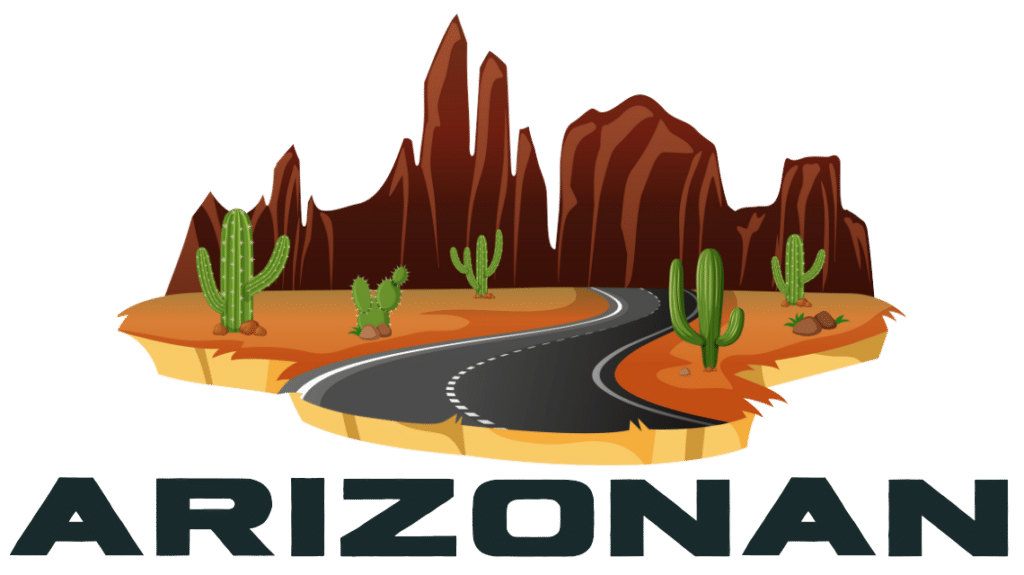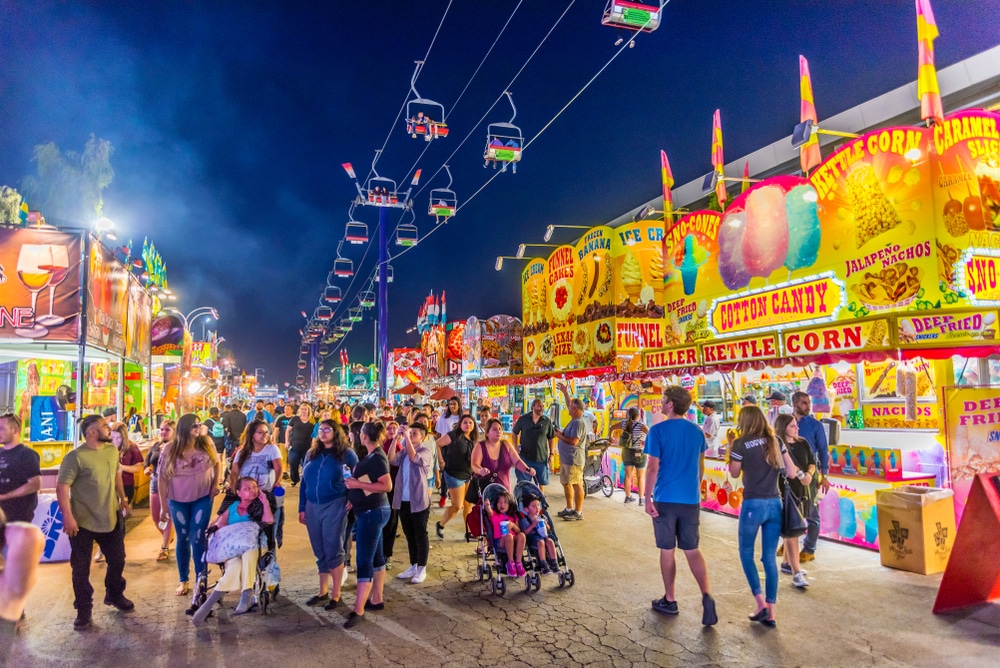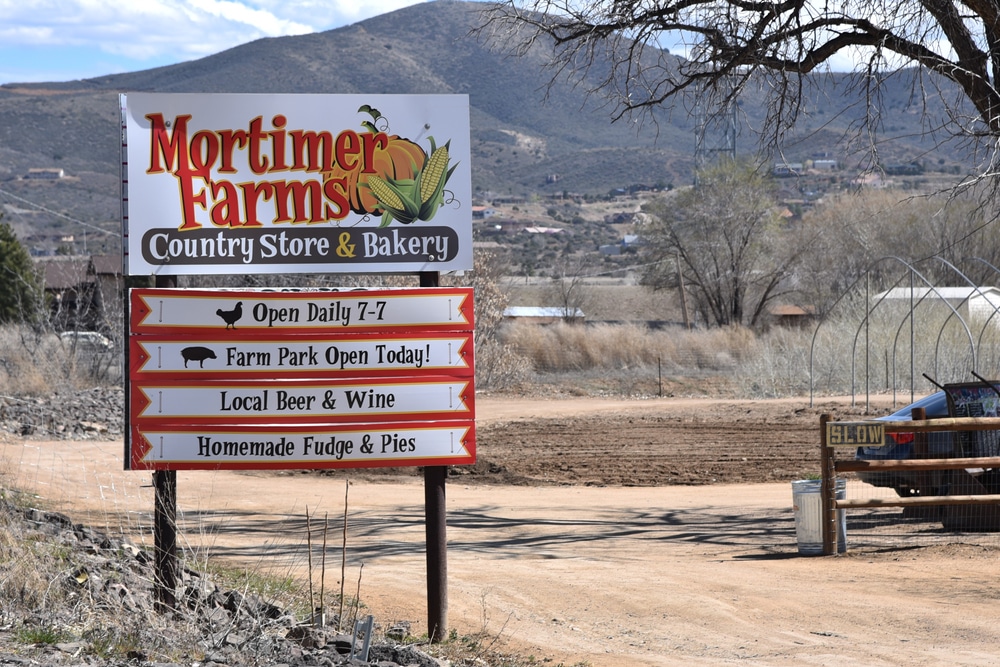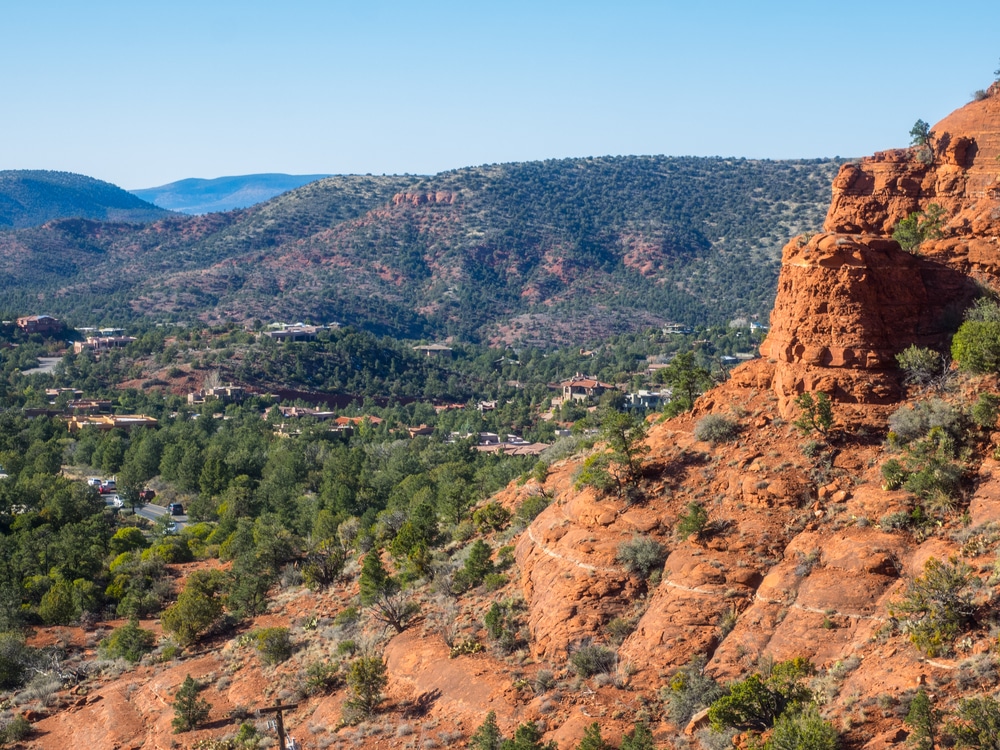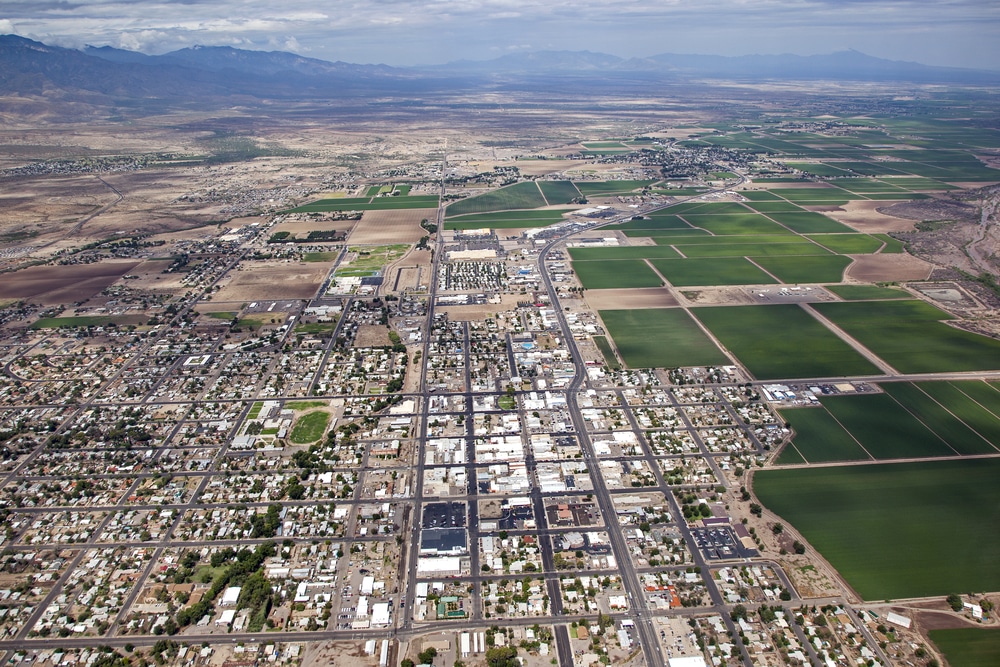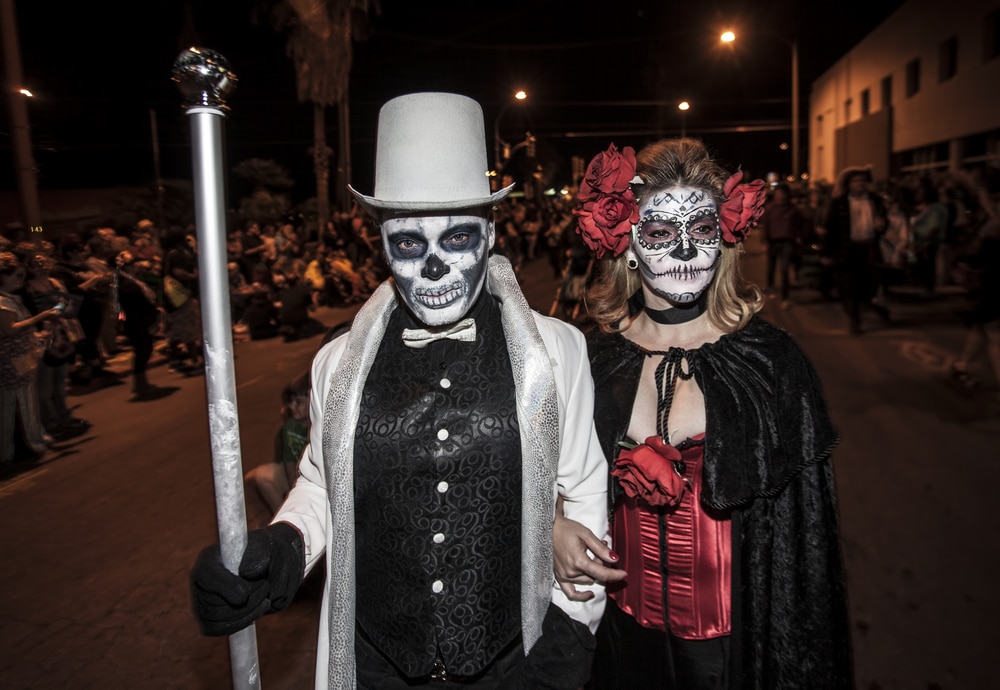A Desert Celebration of Agriculture, Crafts, and Community Heritage
Arizona’s autumn brings one of the Southwest’s most cherished traditions as the Arizona State Fair returns to Phoenix from September 19 through October 26, 2025. This year marks an extraordinary milestone—the 141st anniversary of what began as the Arizona Territorial Fair in 1884, making it one of the oldest continuous celebrations of community, agriculture, and craftsmanship in the American West. What started as a modest gathering near the Salt River has evolved into one of the nation’s top five state fairs by attendance, consistently drawing over one million visitors annually to experience the authentic spirit of Arizona.
The fairgrounds at 1826 W. McDowell Road serve as more than just an event venue—they represent a living testament to Arizona’s agricultural heritage and cultural evolution. From its humble territorial beginnings to its current status as a premier entertainment destination, the Arizona State Fair continues to showcase the ingenuity, creativity, and agricultural excellence that define the Grand Canyon State. This year’s celebration promises to be particularly special, featuring enhanced agricultural exhibits, expanded artisan demonstrations, and new attractions that honor both tradition and innovation.
A Rich Heritage Rooted in Arizona’s Agricultural Past
The story of the Arizona State Fair begins in November 1884, when forward-thinking residents of the Arizona Territory recognized the need for a community gathering that would celebrate their agricultural achievements and provide wholesome family entertainment. The inaugural Arizona Territorial Fair took place near the banks of the Salt River, just west of Central Avenue in Phoenix, featuring horse, pony, and mule races alongside exhibits showcasing agriculture, home economics, and both dairy and beef cattle operations. This first fair established a template that would endure for generations—a celebration where families could gather to appreciate the fruits of their labor and the bounty of their desert homeland.
The early years weren’t without challenges. The untamed Salt River proved both a blessing and a curse, providing water for the agricultural displays but ultimately flooding in 1891 and destroying the original fairgrounds’ buildings and racetrack. This setback led to a seven-year hiatus, but the community’s commitment to the fair tradition remained strong. In 1905, the Arizona Territorial Fair Association was formed by dedicated citizens who established the current fairgrounds location, creating a permanent home for what would become a cornerstone of Arizona culture.
The transition from territorial fair to state fair came naturally with Arizona’s statehood in 1912, but the event’s agricultural focus remained constant. Throughout the early 20th century, the fair served as a vital showcase for the state’s developing agricultural sector, featuring competitions in cotton production, citrus cultivation, and livestock breeding that reflected Arizona’s emerging role as a major agricultural producer. The Great Depression brought temporary suspensions, and both World Wars interrupted the fair’s continuity, but each time the community rallied to revive this essential tradition.
One of the most significant developments in the fair’s history came during the 1930s when Works Progress Administration (WPA) projects transformed the fairgrounds. The iconic grandstand, built with WPA funding, features remarkable bas-relief sculptures by artists Florence Blakeslee and David Carrick Swing, depicting 23 scenes of Arizona life including agricultural scenes, cattle branding, and local industry. These artistic treasures, still visible today, serve as permanent reminders of the fair’s role in preserving and celebrating Arizona’s cultural heritage.
Agricultural Excellence: Celebrating Arizona’s Farming Legacy
The 2025 Arizona State Fair continues its proud tradition of showcasing the state’s diverse agricultural sector, featuring exhibits and competitions that highlight both traditional farming practices and cutting-edge agricultural innovations. Arizona’s agricultural industry contributes billions to the state economy, and the fair serves as an essential platform for farmers, ranchers, and agricultural scientists to share their knowledge and achievements with the broader community.
The livestock competitions remain a cornerstone of the fair experience, with the Arizona National Livestock Show serving as the Southwest’s largest livestock exhibition. Since 1948, this prestigious event has drawn exhibitors from more than 40 states, bringing nearly 2,500 head of premium cattle, horses, sheep, goats, and swine to compete for coveted “Grand Champion” titles. The show demonstrates the quality and diversity of Arizona’s livestock industry while providing educational opportunities for urban visitors to learn about animal husbandry, breeding practices, and the care required to raise championship-quality animals.
Young exhibitors through 4-H and Future Farmers of America (FFA) programs play a vital role in the agricultural competitions, representing the next generation of Arizona farmers and ranchers. These youth competitions in categories including beef cattle, dairy cattle, sheep, goats, swine, and poultry provide hands-on learning experiences that connect urban and rural communities. The dedication and expertise displayed by these young agriculturalists offer hope for the industry’s future while demonstrating the values of hard work, responsibility, and animal care that define agricultural life.
The fair’s agricultural exhibits extend beyond livestock to showcase Arizona’s diverse crop production. Interactive displays feature the state’s major agricultural products including cotton, citrus fruits, vegetables, nuts, and specialty crops that thrive in Arizona’s unique climate zones. Educational presentations explain sustainable farming practices, water conservation techniques, and innovative growing methods that allow Arizona farmers to maximize productivity while respecting the desert environment.
Modern agricultural technology takes center stage in demonstrations of precision farming equipment, irrigation systems, and crop monitoring technologies. These exhibits bridge the gap between traditional farming wisdom and 21st-century innovations, showing how Arizona farmers are adapting to changing conditions while maintaining their commitment to producing high-quality food and fiber. Interactive displays allow visitors to experience virtual reality farm tours, operate scaled-down farm equipment, and learn about career opportunities in modern agriculture.
Artisan Crafts and Cultural Traditions
The Arizona State Fair’s commitment to preserving and celebrating traditional crafts reflects the state’s rich cultural heritage, blending Native American, Mexican, and Anglo traditions into a unique artistic tapestry. The 2025 fair features expanded artisan demonstrations, hands-on workshops, and competitive exhibits that showcase the skill and creativity of Arizona’s craftspeople while providing opportunities for visitors to learn traditional techniques and create their own masterpieces.
Native American artisans hold a place of honor at the fair, demonstrating traditional crafts that have been passed down through generations of Arizona’s tribal communities. Visitors can observe skilled weavers creating intricate baskets using traditional willow and pine needle techniques, watch pottery being hand-formed and painted with natural pigments, and learn about the cultural significance of jewelry making using turquoise, silver, and other materials sacred to Southwest tribes. These demonstrations provide respectful education about Native American cultures while supporting contemporary indigenous artists.
Mexican and Mexican-American cultural traditions find expression through demonstrations of traditional crafts including papel picado (paper cutting), tin work, leather crafting, and wood carving. Local artisans share the techniques and cultural stories behind these time-honored practices, often engaging visitors in hands-on activities that connect them directly to the Hispanic heritage that has shaped Arizona’s cultural landscape. The fairgrounds come alive with the sounds of traditional music and the visual feast of colorful folk art that represents this vital component of Arizona’s identity.
The fair’s competitive craft exhibits attract entries from across the state in categories including quilting, woodworking, metalworking, pottery, fiber arts, and mixed media. These competitions recognize excellence in both traditional techniques and contemporary innovations, encouraging Arizona craftspeople to push the boundaries of their artistic expression while honoring established traditions. Winners receive recognition that often launches or enhances their professional careers while inspiring the next generation of artisans.
Interactive craft workshops allow fairgoers to experience the satisfaction of creating something beautiful with their own hands. Professional instructors guide participants through projects ranging from simple pottery painting to complex weaving techniques, ensuring that people of all skill levels can participate meaningfully. These workshops often sell out quickly, reflecting the growing interest in traditional crafts and the desire to learn skills that connect people to Arizona’s cultural heritage.
The fair also features displays of historical crafts and tools, showing how Arizona’s settlers adapted traditional techniques to desert conditions. Blacksmithing demonstrations using replica frontier forges, spinning and weaving using wool from Arizona sheep, and woodworking using native desert woods provide tangible connections to the pioneering spirit that built Arizona. These living history presentations help preserve knowledge and techniques that might otherwise be lost to time.
Food Culture and Culinary Traditions
No discussion of the Arizona State Fair would be complete without celebrating the extraordinary culinary experience that awaits visitors. The 2025 fair features over 110 food booths representing an incredible diversity of flavors, from traditional American fair favorites to authentic international cuisines that reflect Arizona’s multicultural population. This year’s food offerings include both time-honored favorites and innovative new creations that push the boundaries of fair food creativity.
Traditional fair foods receive the Arizona treatment with unique local twists. The classic corn dog gets elevated with options featuring locally-sourced chorizo or green chile, while funnel cakes are topped with prickly pear syrup and other desert-inspired flavors. New additions to the 2025 lineup include the intriguing Pickle Split and Flaming Hot Cheeto variations on classic treats, demonstrating the endless creativity of fair food vendors in developing new taste experiences that capture fairgoers’ imagination.
Arizona’s Mexican and Southwestern culinary heritage takes center stage with authentic regional specialties prepared by vendors who have perfected their recipes over generations. Visitors can enjoy handmade tamales, fresh tortillas, carne asada, and an array of salsas ranging from mild to volcanic heat levels. These food offerings provide authentic cultural experiences while supporting local Hispanic businesses that have become integral parts of Arizona’s culinary landscape.
The fair’s commitment to showcasing Arizona agriculture extends to its food vendors, many of whom source ingredients locally when possible. Arizona-grown citrus appears in fresh lemonades and citrus-flavored treats, while locally-raised beef features in numerous barbecue and grilled options. This farm-to-fair approach strengthens connections between urban consumers and rural producers while ensuring the freshest possible ingredients in fair food offerings.
International cuisine options reflect Arizona’s growing diversity, with vendors offering everything from authentic Italian specialties to Asian fusion creations, Middle Eastern delicacies, and African-inspired dishes. These food choices transform the fairgrounds into a global culinary destination where adventurous eaters can explore new flavors without leaving Phoenix. Many vendors are family-owned businesses that bring authentic family recipes and traditional cooking techniques to the fair environment.
Planning Your 2025 Arizona State Fair Experience
The 2025 Arizona State Fair operates on a Thursday through Sunday schedule from September 19 through October 26, providing multiple opportunities for visitors to experience all the fair has to offer. This extended schedule allows families to choose weekends that work best for their schedules while reducing crowding on any single day. The fair’s location at the Arizona State Fairgrounds makes it easily accessible from throughout the Phoenix metropolitan area and beyond.
📅 Dates: September 19 – October 26, 2025 (Thursdays through Sundays only)
📍 Location: Arizona State Fairgrounds, 1826 W. McDowell Road, Phoenix, AZ 85007
🕐 Hours: Thursday-Sunday, 12:00 PM – 10:00 PM
📞 Contact: (602) 252-6771
🌐 Website: azstatefair.com
📧 Email: info@azstatefair.com
📱 Social Media: @azstatefair (Instagram, Twitter)
Advance ticket purchase is strongly recommended, as the fair consistently attracts over one million visitors during its run. Online ticket sales offer convenience and often feature discounts not available at the gate. The fair’s website provides detailed information about ticket prices, special discount days, and package deals that can make the experience more affordable for families.
Parking at the fairgrounds requires planning, as the popularity of the event can create significant congestion. The fair offers multiple parking options including on-site lots and off-site locations with shuttle service. Many visitors choose to use ride-sharing services or public transportation to avoid parking hassles entirely. The fairgrounds are accessible via several Phoenix-area public transit routes, making car-free attendance a viable option.
The fair’s accessibility features ensure that all visitors can fully enjoy the experience. Wheelchair rentals are available, and the fairgrounds are designed to accommodate visitors with mobility challenges. The fair staff receives training in assisting visitors with disabilities, and designated parking areas and viewing areas ensure that everyone can participate in the celebration.
Weather considerations are important for October visits to Phoenix, as temperatures can vary significantly. Early October may still feature warm days, while late October typically offers perfect weather for outdoor activities. Visitors should check weather forecasts and dress appropriately, with layers being recommended for comfort throughout the day as temperatures change from afternoon to evening.
The Arizona State Fair represents more than just entertainment—it embodies the spirit of community, the celebration of agricultural heritage, and the preservation of cultural traditions that define Arizona. Whether you’re drawn by the agricultural exhibits, the artisan demonstrations, the culinary adventures, or simply the joy of sharing a timeless tradition with family and friends, the 2025 Arizona State Fair offers experiences that create lasting memories while connecting visitors to the authentic spirit of the Grand Canyon State. This year’s celebration of 141 years of fair tradition promises to honor the past while embracing the future, ensuring that this beloved Arizona institution continues to thrive for generations to come.
